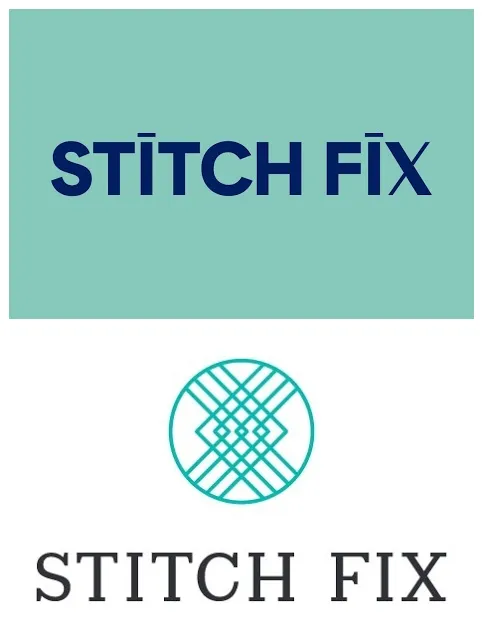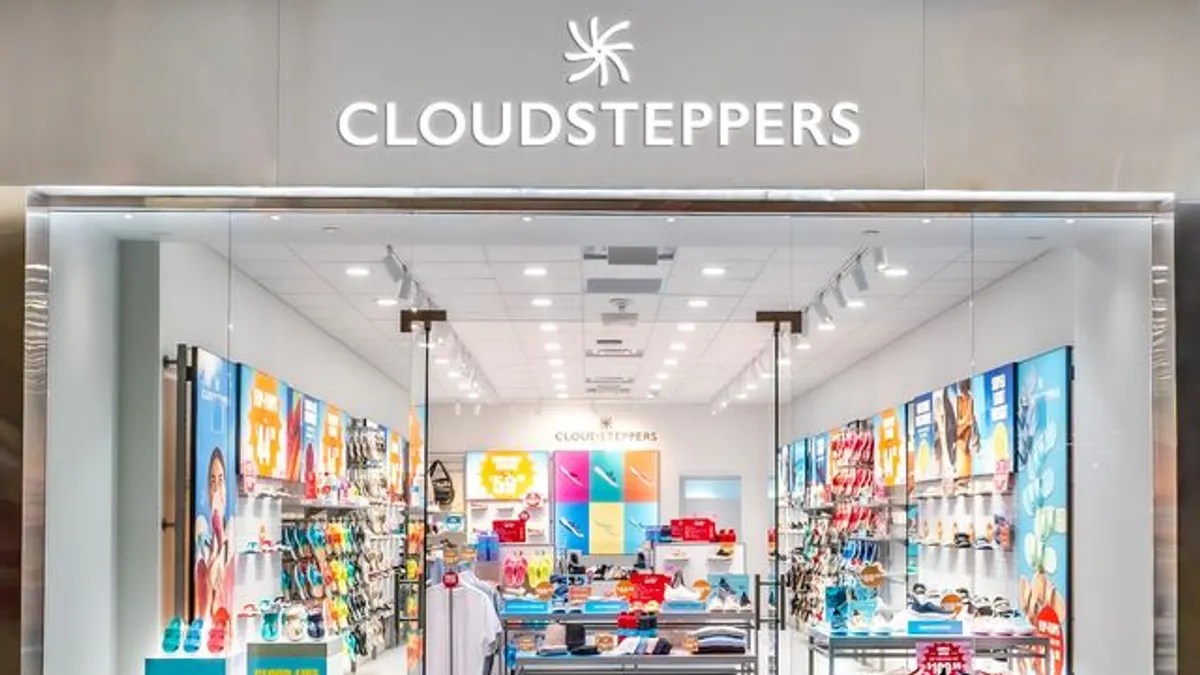At a time when AI is dominating headlines, apparel box e-retailer Stitch Fix has rebooted its customer experience model by emphasizing its human stylists.
For months now, starting in March, CEO Matt Baer has hinted at an overhaul, saying in June that the company was “rethinking every interaction.” In a blog post last week, Baer described a suite of changes, spanning merchandising and marketing, as just the beginning. At the same time the company also unveiled a new, sans-serif logo.
“We are now in the midst of a transformation at Stitch Fix, which includes reimagining how we engage with our clients – from the clothing and accessories we offer to how we bring those styles to them,” he said. “Today, we are beginning to introduce a more modern and dynamic Stitch Fix, and I’m proud to announce the first in a series of changes we’re making to our client experience.”
Merchandising changes
The apparel box subscription model — where the retailer curates a box of clothing and accessories for customers who sign up for the service — seems to have largely fallen out of favor. Nordstrom and ThredUp have abandoned the idea, and some startups in the space have simply disappeared.
Stitch Fix, too, has struggled. Last year, even before hiring Baer away from his post as Macy’s digital chief, the company walked back several initiatives that were meant to stoke growth but instead alienated many customers. In its last full fiscal year, sales fell 21%, the number of active clients fell 13%, net revenue per active client was down 9% and narrowing losses were based on drastic cost cuts.

Despite growing skepticism among some analysts, though, Stitch Fix has held on. Since its start, the company has sent five items per box, charging $20 each time and providing free delivery and returns, at a cadence of customers’ choosing. Now, clients can opt to get up to eight items in each box, which Baer said would help Stitch Fix better address demand for seasonal and special occasion items.
The e-retailer is also expanding its private brand portfolio, which the company has long said is key to its differentiation and important for margin expansion. Montgomery Post is a new women’s workwear label, while The Commons will offer “elevated and trend-right styles for both women and men,” per Baer’s post. Three of its most successful owned brands, Market & Spruce, We Wander and 01.Algo, will expand to include children’s apparel, he said.
The company will also broaden its assortment via third-party brands, according to Baer's post.
Leveraging the data trove
In the past, some analysts have said that Stitch Fix hasn’t taken full advantage of the flood of data it has accumulated over the years. With this overhaul, that seems to be changing.
First, Stitch Fix is capitalizing on the initial style quiz that clients must take when they sign up. After customers finish the quiz, they will get what the company is calling their StyleFile, “a personalized snapshot that shares their individual style personality and the specific elements that contribute to it.”
The company said it has tapped its data reserves “to identify a broad range of personalities, from Timeless Trendsetter to Carefree Casual,” and will peg each customer to the StyleFile that suits them best. This starts with new women’s clients, with men and existing clients getting their StyleFile assignments in coming months, the company said.
Second, each customer will also receive “a new, digital Style Card that provides clients with personalized, shoppable outfit ideas built around items sent in their individual Fix, as well as previously purchased items.”
Spotlight on stylists
Finally, Stitch Fix says it is putting more focus on its stylists, the latest answer to its longstanding challenge of how to balance its tech versus its humans. This comes after last year’s layoffs, ending full-time work for stylists and generally rising tension over what to reveal to customers about the role of the company’s algorithm, which in many cases is responsible for previews of what will go into the boxes.
“From the beginning, Stylists have been at the heart of Stitch Fix,” Baer said in his blog post this month. “As we reimagine our client experience, we are increasing the visibility of our Stylists.”
The company will start to provide a profile for each stylist that features their “unique expertise and work portfolio, as well as related interests,” he said. This also includes an option, now being tested, for stylists to upload their photos, which will be seen by clients whose boxes they’ve curated, according to a company spokesperson.
“This test has resulted in positive feedback from clients and Stylists alike, helping to create deeper relationships and a better styling experience for both,” the spokesperson said. “This feature is being created in close collaboration with our Stylists to celebrate each person’s individuality and expertise, and we’ll continue to work with them to incorporate their feedback.”
For now, uploading a photo is not a requirement of the job, but Stitch Fix is mulling that, per the spokesperson. A stipulation that the company be allowed to use such photos “in perpetuity” is being reviewed after pushback from some stylists, the company said. Regardless, a photo would only continue to be used in the context of past Fixes, which could include Fixes from a stylist who has left the company, per the spokesperson.
This follows an influencer playbook that some observers suggested for Stitch Fix years ago. For certain stylists that may be an opportunity, though it brings up some issues, especially for those who might choose to communicate with clients through their private social media accounts, according to Sarah LaVoi, a partner at law firm BakerHostetler’s advertising and digital media practice, and co-leader of its retail industry team.
“As the employee, you do have to think about that. ‘Do I want to be a content creator? Can I give an honest, accurate overview of my employer's goods and services?’” LaVoi said by video conference.
A company must also weigh the pros and cons, since they lose some control if employees communicate via their own accounts. Still, the approach also has its roots in old-fashioned retail, she said. It’s an effective way for Stitch Fix to approximate online the classic encounter between a salesperson and store customer, according to LaVoi.
“For Stitch Fix, it really is part of the role as a stylist in this social media, digital, interactive context,” she said.























